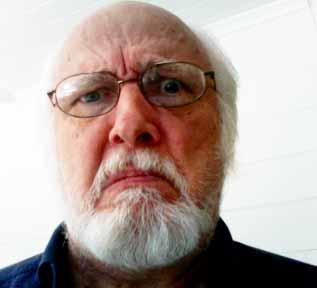
A consensus among commentators designates Proust's novel--specifically the scene of Swann's experience of Vinteuil's sonata (the "little phrase") --as the exemplary contemporary instance of what Agamben calls trobar invention. The scene is paradigmatic for Benjamin, Greimas, Guattari. The focus for the moment is Merleau-Ponty, who declared that Proust (in this scene) had created the definitive example of a sensible idea. Whatever problems deconstruction had with the phenomenological reduction, in the context of grammatology and apparatus invention Merleau-Ponty is a major figure, learning from the entire mix of innovations in the first half of the twentieth century, in order to develop an early version of an electrate metaphysics. Truth appears in a disclosive withdrawal (aletheia): the exhibition is by seeing and saying, showing and telling, indication and statement (to which must be added: listening, reception). Literacy promoted the saying, subordinating showing within the affordances of writing. Electracy (modernism) shifts priorities to showing, indication, gesture, pushing ontology beyond language and discourse into the image (and its technical prosthesis evolving within the digital apparatus). M-P develops the metaphysical capabilities of perception itself, which is sensation or human sensory experience organized in aesthetics, in each of the arts. What grammar of natural language was for Aristotle, graphic design in art is for Merleau-Ponty.
How does a sensible idea function as ontology? Swann attends the Verdurin salon, where he hears Vinteuil's sonata, even just the first few bars, the violin overture, the hook, and he undergoes an experience. This is not the first time he has heard this piece. Rather, he recognizes it now, in the context of a situation, relating to a woman he meets at the salon (Odette). The first point is that the idea is "sensible." It must be experienced, heard, felt, and this emotion of the music is to the electrate apparatus what reasoning in written logic is to literacy. It is an encounter of flesh, with Swann's body as pivot or hinge, the chiasmatic, topological crossing of outside within. "Flesh" in M-P's ontology replaces "substance." It is ontological in that through the carnal body humans receive (and produce) the reality of the Umwelt, the milieu, which is of the same flesh (enveloping subject-object). The association created in Swann's imagination between the melody and the feeling for Odette constitutes an "initiation"--M-P's translation of Husserl's Stiftung (foundation, institution, monument). The formation of the sensible idea marks an entry into the transcendent field of Being, opens a dimension of choral space-time, a "landscape" of alterity within creative practice becomes ontological.
How does a personal experience of art become idea? The idea is in art in the way the melody is in the notes (compare Walter Benjamin: ideas are to thought as constellations to stars). Perception and language are inherently reversible, one into the other chiasmatically, to begin with. M-P merged Saussure's linguistics with Gestalt theory, to propose that perception is not of raw sensation, and not immediate experience (Erlebnis), but an articulation of patterns given organizing world. Melody is a Gestalt, an emergent pattern produced through formal coherence. Perception guided by art is for electracy what reasoning guided by logic is for literacy. Perception works diacritically in the same way that language does, with signification emerging by means of a system of formal (aesthetic) relationships. The figure-ground switches of attention and intention organizing Gestalts function diacritically, not as reference or content, in other words, but as difference enabling signification. Fragments of material sensation, organized within art forms, are folded back onto the world to become figures capable of expressing truth about the world. In Swann's case, a systematic analogy (allegory) is instituted between the formal, aesthetic features of the sonata, and the feeling for Odette. The event is foundational (as Stiftung) because it initiates a field of relationships structuring Swann's lifeworld in general. A passage is opened through this idea between the visible and the invisible Swann. These Gestalts are not simple associations, M-P explains, but function more like a fetish in Freudian theory. Anything has the potential to become the emblem of reality for Swann, and this potentiality is the invisible dimension of the world. The presence/absence binary of Aristotle's metaphysics is shifted in M-P to present/latent. The contingent event, once triggered, becomes necessity.
The implications for Appiphany of the sensible idea are many. For now it suffices to note the description of the shared chiasmatic field of Being as a "landscape," throughout which are disseminated a multitude of monuments (Stiftungen). For a collective singularity to be possible a device and practice capable of correlating conflicting simultaneous inaugurations is required. The importance of a shift in ontology from actuality to potentiality is apparent here, in that in virtual reality the rules of non-contradiction and incompossibility may not apply. We need a "photosynth" of sensible ideas.
See Maurice Merleau-Ponty, The Visible and the Invisible, Ed. Claude Lefort, Trans. Alphonso Lingis, Northwestern University Press, 1968.
*Picture: Hawthorn flowers. M-P singled out as emblems of initiation Proust's descriptions of the hawthorn flowers (aubépines) that were a primary emblem of Méséglise Way. They exemplify the Nachträglichkeit, the reprise or metaleptic memory loop that is necessary for a sensible idea. For Proust only remembered flowers were real.

